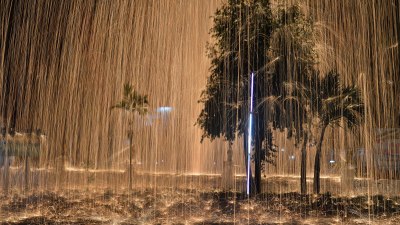Why the Air Feels So Crisp After the Winter Thaw
Discover the science behind the crisp air after winter thaw and its refreshing impact on our senses.

Image by stanislav71 on Freepik
As winter begins to wane and the thaw sets in, many individuals step outside to experience a delightful phenomenon: the air feels remarkably crisp. This sensation is more than just a romantic notion associated with the end of the cold season; it is rooted in several scientific principles that influence our environment during the winter months.
The Science of Air Density
One primary reason the air feels crisp after winter thaw is related to air density. Cold air is denser than warm air, which means that when winter's chill begins to lift, the transition to warmer temperatures affects the air quality around us. Cold, stagnant air is often laden with pollutants, dust, and other particles that accumulate over the winter months. As the weather warms and the atmosphere becomes less dense, these particles become less concentrated, leading to a cleaner, fresher sensation.
Humidity Levels
Another important factor contributing to the crispness of post-thaw air is humidity. Winter typically presents low humidity levels due to the cold air holding less moisture. When the thaw occurs, warm air holds the potential for increased humidity, yet the transition period often keeps humidity levels lower while introducing the warmth of spring. This creates a unique paradox where the air retains that refreshing crispness while also preparing for the more humid days ahead. Low humidity levels can also lead to increased evaporation rates of surface water, further improving the air quality and enhancing the crispness.
Changes in Atmospheric Pressure
As winter progresses and eventually thaws, the changes in atmospheric pressure can also contribute to that invigorating feeling. Cold fronts and high-pressure systems tend to dominate winter weather patterns. When these systems dissipate during spring, the resulting lower atmospheric pressure allows the air to expand and become less dense, leading to the invigorating sensation we associate with crispness. Additionally, the shift in pressure can lead to the development of winds, which create a refreshing breeze, moving stagnant air away and introducing fresh air currents.
Pollutants and Particulates
Throughout the winter months, air pollutants and particulates tend to build up in the atmosphere. This accumulation occurs as cold temperatures may prevent the dispersion of these particles, resulting in hazy skies and a feeling of heaviness. However, once the thaw begins, the warming temperatures can lead to better circulation of air. Rainfall that commonly accompanies the thaw acts as a natural cleansing mechanism, washing away dust, pollen, and other pollutants. This results in cleaner air and enhances our sensory perception of freshness in our environment.
The Role of Vegetation
With the arrival of spring, vegetation begins to bloom and comes back to life. As plants awaken from their dormant state, they resume the process of photosynthesis, releasing oxygen into the atmosphere. This spike in oxygen levels can dramatically improve air quality, providing a fresh, invigorating feeling. In addition, the lush greenery can help filter out some pollutants, increasing the overall crispness of the air. As flowers bloom and trees sprout new leaves, the scent of flora adds an additional layer of sensory pleasure to the experience of stepping outdoors.
Psychological Effects
While several physical attributes contribute to the crisp air after winter's thaw, it is essential to consider the psychological aspect as well. The anticipation of spring and the end of winter can lead to a heightened perception of freshness and clarity. After months of chilly winds and barren landscapes, the contrasting warmth and sensory changes can lead to a sense of renewal not only in the air but also in our mental state. The sunlight becoming more prevalent after winter lends a hand in uplifting our spirits, combined with the pleasant scents and sounds of nature awakening.
The Seasonal Shift
As we experience this seasonal shift, it’s essential to appreciate the various sensory elements that come with a thawed atmosphere. From the invigorating crispness of cold air warming to that slight dampness of melted snow, every detail enhances our connection to the environment. The transition from winter to spring is not merely a meteorological change; it represents a time of rejuvenation for nature and humanity alike.
In conclusion, the crisp feeling of air following the winter thaw is a convergence of scientific phenomena and psychological upliftment. Factors such as changes in air density, humidity, atmospheric pressure, pollutants, and rejuvenation of vegetation play crucial roles in shaping this experience. As we step outdoors into this refreshing air, we can take a moment to appreciate its invigorating effects, reminding us of nature's cycles and our place within them. The crispness of post-thaw air not only signals a change in the seasons but also serves as an invitation to embrace the beauty of life awakening around us.











